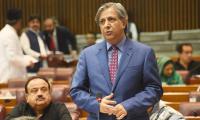Judiciaries around the world are often seen as going through phases. Only occasionally are courts the site of resistance against the hegemonic forces dominating the structure of the state or society at large.
Is it institutional psychology that permeates through individuals on judicial benches leading them through some subconscious process identified by Jung or Freud to outcomes that do not inconvenience the structures of power in place at any given time? Or is the cooperation more deliberate and conscious as judges come to see themselves as part of the deep power structure that must be preserved for the sake of institutional and personal stability?
The period 1905 to 1937 is described wistfully as the Lochner Era of the Supreme Court of the United States. This was a time during which the Supreme Court of the United States emerged as a champion of the commercial interests of the propertied. Legislation limiting hours of work imposed on the labour force or facilitating women on the shop floor was consistently struck down as unconstitutional interference in the right to carry out business and enter into contracts assured to businesses and property owners. As Roosevelt’s New Deal gained political and societal salience and the president threatened to pack the Supreme Court, the famous ‘switch in time’ was administered by the court itself in 1937.
Thereafter, the attention of the court turned away from constraining the state’s power to regulate commerce. The court found purpose in looking at societal cleavages with race as the lingering thorn. While the judgment declaring racial separation in schools was delivered by the United States Supreme Court in 1954 (Brown v Board of Education), it took the vigour and the anger of the civil rights movement of the 1960s for that judgment to be enforced by the courts.
Closer to home, the superior judiciary has faced challenges no judiciary should have to face. It has been repeatedly asked to choose between the continuation in office of incumbent judges and fidelity by those judges to their oaths to defend the constitution against subversion.
The decision to subdue civilian forces and democratic governance while brandishing the banner of constitutional supremacy was taken early. The reasons presented for the Public Representative Office Disqualification Act of 1949 (PRODA) point to the allegedly rampant corruption on the part of the politicians that was said to have taken hold of the state. With most out of favour politicians facing a PRODA proceeding by the end of 1949 the judiciary was expected to play its ‘constructive role’.
The declaration of martial law in Lahore in 1953, the dissolution of the constituent assembly in 1954 and imposition of martial law in 1958 each resulted in ‘landmark’ court judgments validating what the hegemonic bureaucratic-military block had willed. It was only appropriate that Chief Justices Munir and Cornelius found it fit to make the transition from chief justice of Pakistan to law minister of the Ayub and Yahya martial law regimes, respectively. The template of ‘cooperation’ between the organs of the state, with democracy a dispensable virtue, was set early.
The Lawyers’ Movement of 2007-8 was hailed as signalling a departure from the template. The glow lasted a few years as the restored judiciary set about cleansing the legal system of the vestiges of the Musharraf era. The judges appointed by Musharraf after the so-called Emergency of 3 November 2007 were removed. The action of 3 November was called a constitutional wrong meriting prosecution for the offence of high treason. Musharraf’s NRO was declared non est. Looking back at the 2001 judgment in Zafar Ali Shah’s case that had validated the Musharraf martial law of October 1999, the Supreme Court declared in no uncertain terms its resolve to never again become accessory to an unconstitutional disruption of the system.
The long neglected Asghar Khan case was taken up and decided in 2012. The then army chief and director general ISI were found to have acted in violation of their oaths of office to favour politicians opposed to Mohtarma Benazir Bhutto in the 1990 general election. It was ordered that they be acted against for having subverted the mandate of the constitution. The cases of missing persons were given prominence, with the restored chief justice conducting week-long open hearings in Quetta in which the narrations of those left behind were heard and recorded at length. Had a new era dawned?
The legal historian looking back will no doubt observe with interest the use of Article 19A of the constitution, that guarantees citizens access to information, by the Supreme Court in 2012 to launch the Memogate Inquiry against the government. The winds had started blowing along traditional routes. The intrepid historian will also note that the judgment in the Asghar Khan case bore no fruit with the government elected in August 2018 petitioning the Supreme Court to abandon any attempt to implement that judgment. This petition and its de facto acceptance would stand in stark contrast to the implementation of the judgment in the Panama Case.
The annals composed by the historian would note the rise and fall of the prosecution against Musharraf. The prosecution for high treason that was, in effect, urged by the Supreme Court in 2013 found its burial in 2019 when a court held that Musharraf had not in fact subverted the constitution on November 3, 2007 when he had incarcerated the chief justice of Pakistan and over sixty other judges of the superior judiciary in order to prevent them from discharging their duties. The government elected in August 2018 had sought that all proceedings against Musharraf be quashed. The government emerged victorious. Musharraf emerged cleansed. The missing persons remain missing – though their missing is noted with concern at all levels.
Much before the legal historian gets around to composing her treatise, the public would have spoken. In fact, the public now speaks daily and incessantly through the various social media spaces. ‘The Revolt of the Public and the Crisis of Authority’ by Martin Gurri, latest edition published in 2018, is a text that falls in the expanding genre that documents the politics of negation that has emerged in the smartphone era.
This is a politics of the disempowered who now have a voice. YouTube channels, Facebook pages and Twitter handles speak to them and allow them to speak back within chosen echo-chambers. What they see from afar disgusts them. The ‘system’ seems alien, corrupt and unconcerned about their economic or moral desires. The economy does not provide the social mobility they seek, or does not do so often enough. Someone must be responsible for their predicament. They seek vengeance. They see powerful transgressors getting away. This is the politics that caused Trump, Modi and Brexit.
The recent press conference by three federal ministers darkly calling upon the members of the ECP to resign since, according to the ministers, the ECP members had failed in their duty to conduct transparent elections for the Senate fits into the larger narrative of disgust that is a permanent feature of the public discourse in Pakistan. This is disgust that is cynically aimed every day at ‘the system’ in newspaper articles, talk shows on mainstream electronic media as well as on the dozens of social media channels and Twitter handles that have arisen to command the attention of ‘the people’.
All sides on the power and political spectrum are seeking to draw upon this disgust as a source of political capital. Those disgusted that a sipah-salaar was convicted while politicians got away as well as those disgusted at the ease with which the system forsakes principles when faced with power used to snuff out democracy are both denying the moral authority of ‘the system’. Systems do not survive without moral authority.
These are fragile times that call for political maturity and real empathy for the people. The system must deliver and must be allowed to deliver. The moral authority of the system must be repaired. Otherwise, the proponents of the China Model of constrained freedoms of speech and association with hope of economic prosperity in a single party state are lurking nearby.
The writer is an advocate of the Supreme Court of Pakistan.
Email: salmanr2002@hotmail.com
Twitter: @salmanAraja
An aeroplane of the national flag carrier of Pakistan is seen in this file photo. — AFPWhile Pakistan considers...
Representational image of a graph depicting various variables. — APP/FileInitiated by the centre and fiercely...
In this picture taken on April 16, 2023, people throng a market area during shopping in Lahore. — AFPOne of the...
Honour crimes also target men. In Sikandar Ali Lashari vs The State, SHC upheld conviction passed by ATC for honour...
If Sindh earmarks Rs20 million per police station, it will cost only Rs10 billion to make them effective first...
A complex and difficult policy environment seems to be highlighted by US’s recent application of sanctions on...







